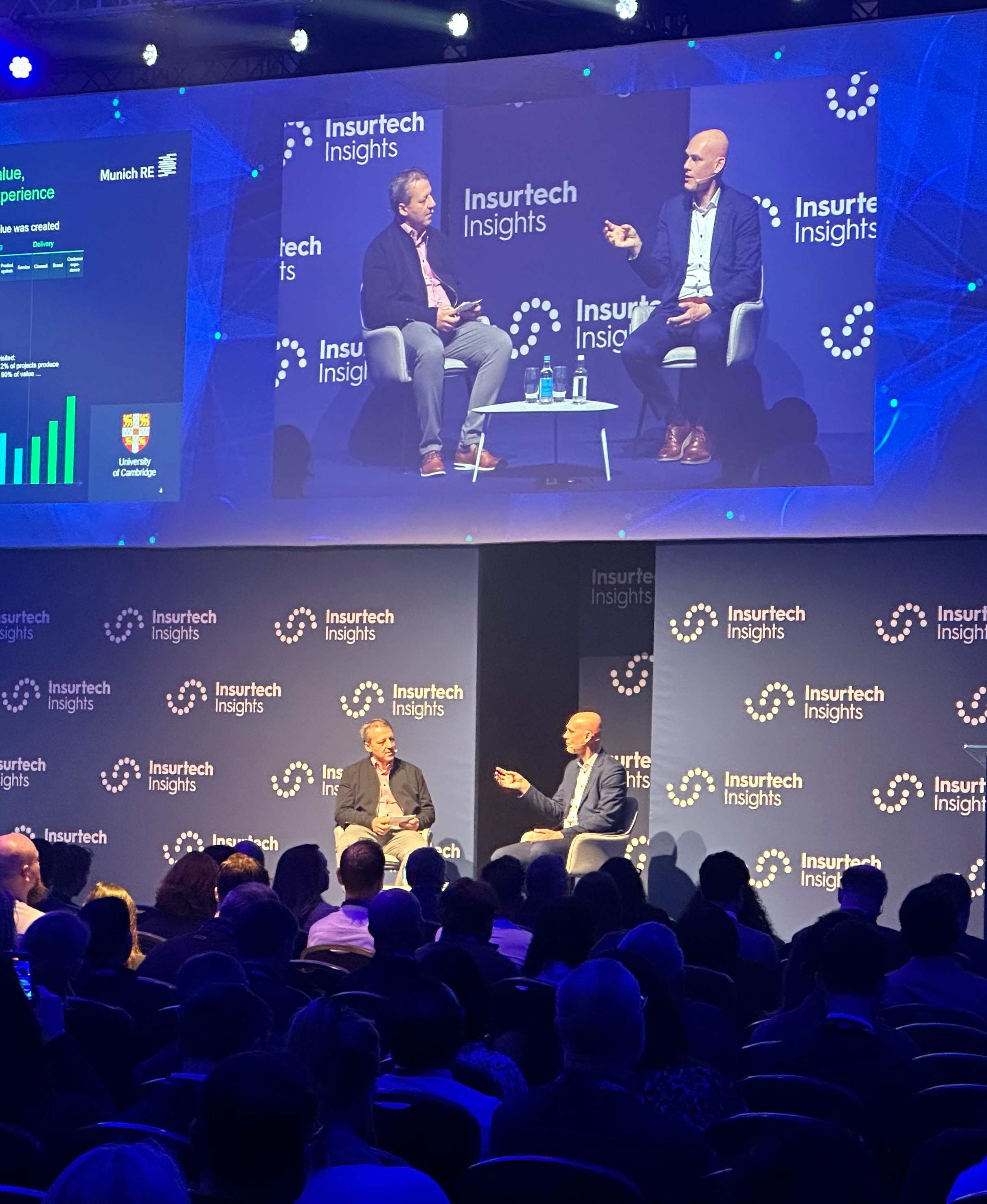Plan and build a modern platform ecosystem that spans cloud infrastructure, digital building blocks and business services to boost productivity, increase efficiency, reduce time to market and scale innovation.
genericSection
Vertical Campaigns > Insurance
Insurance.
Connecting data, AI, software and cloud to industrialise innovation across the underwriting workflow.

Page Hero Image Overlap
False
grid
Vertical Campaign - Insurance - Value Prop Intro
Innovate faster with platforms, enhance processes with AI, empower teams with data.
We help insurers and reinsurers drive digital maturity with a proven cloud-first approach that leverages the power of Azure.
Vertical Campaign - Insurance - Element 1
Apply platform thinking to support innovation at scale.
False
Vertical Campaign - Insurance - Element 2
Build powerful, intuitive pricing platforms.
Run, manage and iterate models faster on metadata-driven pricing platforms that empower actuaries to extend and refine pricing calculations without the need for IT intervention.
False
Vertical Campaign - Insurance - Element 3
Enhance processes and customer experience with AI.
Improve automatic underwriting, extract and summarise information from unstructured documents, automatically reply to customer requests and questionnaires and build application copilots.
False
Vertical Campaign - Insurance - Element 4
Empower actuaries, underwriters and data enthusiasts.
Work (and play) with high quality data on high performance platforms. Invest in cloud-based scalable data architectures that underpin the delivery of services, insight and value to business users.
False
0
Grid
Four Columns
White
Center
No Borders
Small Image
Default
genericSection
IN ACTION
Vertical Campaign - Insurance - Case Study
Innovation in Reinsurance
Delivering platform transformation to support fully automated underwriting.
Like most businesses in the reinsurance sector, our customer had a decentralised legacy landscape where functional overlap featured heavily. Different applications - each covering the net/ gross pricing workflow - had been created for specialised Treaty and Facultative areas. This created inefficiencies for underwriters as they moved between multiple tools and interfaces.
Find out how we helped create a unified, streamlined underwriting platform geared for scale, consolidating legacy applications to deliver a high level of process automation.

Logo- Data - Case Study - InsuranceCampaignCaseStudy

False
Career Progression Services
False
Black
genericSection
Campaign Vertical - Insurance - Apply Platform Thinking #1
ValueProp1 - Insurance
Apply platform thinking to support agile innovation.
Modularise the value chain to create new service options for end-users and customers.
Leverage common platform functionalities to rapidly build new value propositions and offerings. Standardise interactions between users and systems at scale to lower costs and accelerate deployment, without restricting creative freedom or innovation potential.
Integrate generative AI tools into platforms and platform stacks to transform the way users navigate, harness, engage with and consume platform capabilities and content.

False
Value Proposition
False
Left
genericSection
Campaign Vertical - Insurance - Build Powerful Intuitive Pricing Platforms #2
ValueProp2 - Insurance
Build powerful, intuitive pricing platforms.
Run, manage and iterate pricing models faster on robust, centralised platforms without the need for IT intervention.
Deliver new features in response to evolving pricing strategies and market conditions, absorb change in a cost-effective, non-disruptive way and reduce time-to-market for new insurance products.
Handle all kinds, volumes and velocities of pricing data and make them usable for multiple consumers. Use metadata to build new pricing models that cover new risks and enable the processing of dark data.

False
Value Proposition
False
genericSection
Campaign Vertical - Insurance - Enhance Processes and Customer Experience with AI #3
ValueProp3 - Insurance
Enhance processes and customer experience with AI.
Design richer, more efficient, more informed interactions between your customers and your business.
Leverage Generative AI to automate tasks within your underwriting workflow. Simplify user experience by combining intelligent questionnaires with data sourcing for both buying coverage and handling claims. Provide natural language consumer advice, guiding policyholders through claims procedures.
Use classic AI models to detect signals in your portfolio data or customer submissions to improve your pricing approach and portfolio management. Synthesise and summarise documentation and other unstructured forms of content, automate compliance monitoring, and generate training content on latest areas of regulation. Develop copilot capabilities into your line of business or externally-facing applications.

False
Value Proposition
False
Left
genericSection
Campaign Vertical - Insurance - Empower Agents & Actuaries #4
ValueProp4 - Insurance
Empower actuaries and agents with self-service data.
The flexibility to work (and play) with high quality data on high performance platforms.
Enable non or semi-technical users to work with data independently, reducing their dependence on your data teams and accelerating decision-making. Provide business-wide tools for querying, transforming and integrating data. Build visualisation capabilities to create custom charts, graphs, and dashboards, simplifying complex data to help business users explore and analyse trends and patterns.
Maintain data governance standards alongside user independence, ensuring data quality, security and compliance with regulations.

False
Value Proposition
False
genericSection
Empty-Space_White_LINKED
Empty Space
False
White
grid
Vertical Campaign - Insurance - Resources
Get the latest from our sector and domain experts.
Watch the videos, read the whitepapers and blogs, explore the case study.
Vertical Campaign - Insurance - Resource 6 ITI 24 Konrad Munich Re
Why GenAI Alone Won’t Futureproof You (And The Tech That Will) - with Munich Re.

False
Vertical Campaign - Insurance - Resource 5 Platform Thinking Whitepaper
The Platform-Thinking Insurer.

False
Vertical Campaign - Insurance - Resource 7 ITI 24 Murray Tech Stage
Overcoming Process Debt For Agile Innovation In Insurance.

False
Vertical Campaign - Insurance - Resource 3 MR Case Study
Delivering Platform Transformation To Support Fully Automated Underwriting.

False
Vertical Campaign - Insurance - Resource 2 Pricing Whitepaper
Level Up: Pricing Innovation, Maturity & Value.

False
Vertical Campaign - Insurance - Resource 8 Gen Re BDL 2023
Data as a Service: Leadership, Strategy and Alignment by Gen Re.

False
Vertical Campaign - Insurance - Resource 1 Realytix Zero
The Automation Revolution In Underwriting with REALYTIX ZERO by Munich Re.

False
Vertical Campaign - Insurance - Resource 4 Excel Blog
Show Us The Spreadsheet: Get your underwriters & actuaries out of Excel.

False
0
Grid
Four Columns
Grey
Center
No Borders
Large Image
Default
genericSection
Insurance-Lets get started section - GetInTouch_CTA
Let's get started.
Drive digital maturity with a proven cloud-first approach. Book a consultation with our insurance experts to discuss your roadmap.

Get In Touch
False
